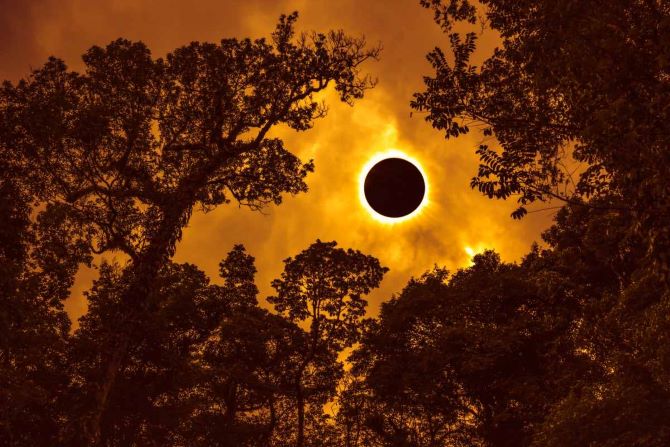Eclipses arouse genuine interest and scientific admiration. From time to time, events occur that stand out even among this amazing series of astronomical phenomena. One such moment is a unique total solar eclipse, which represents something more than the usual juxtaposition of celestial bodies. What makes this year’s solar eclipse so special – read on joy-pup.com.
What is a solar eclipse?

Eclipses are magnificent astronomical phenomena that can be visible in different parts of the world, attracting the attention of millions of observers. A solar eclipse occurs when the Moon passes between the Earth and the Sun, blocking some or all of the sunlight. This only occurs during the New Moon, when the Moon is in an exact line between the Earth and the Sun. Depending on how closely the three celestial bodies align, the eclipse can be partial, total, or annular.
A total solar eclipse is an astronomical event in which the Moon completely blocks the light of the Sun, leaving only its corona (the outer part of the star’s atmosphere) visible. Typically this occurs approximately once every 18 months.
Unique first total solar eclipse of 2024

The usual number of eclipses in a year is four; but in a few years there may be 5, 6 or even 7. In 2024 there will be 4 eclipses. On April 8, 2024, a total solar eclipse will occur in the sky, a rather rare and very interesting astronomical event. The Moon will stand perfectly between the Earth and the Sun for several minutes, completely covering it.
On April 8, 2024, a solar eclipse will be visible from many major cities in Canada, the United States and Mexico. The Moon’s shadow passes through several time zones. The entire event will take about two and a half hours, but the peak will only last about four minutes. Typically, total solar eclipses, which occur every 18 months, are visible only from inaccessible regions – from the middle of some ocean. But on April 8 it will pass through some of the world’s most densely populated areas. Almost 32 million people will have the opportunity to see this rare and spectacular event with their own eyes.
The last total solar eclipse, which occurred in August 2017, coincided with a time when solar activity was at its minimum. However, this year it will coincide with the moment of maximum solar activity and scientists will be able to observe the solar corona in much more detail. It will be larger and have many more “plumes” than seven years ago.







Only registered users can leave comments